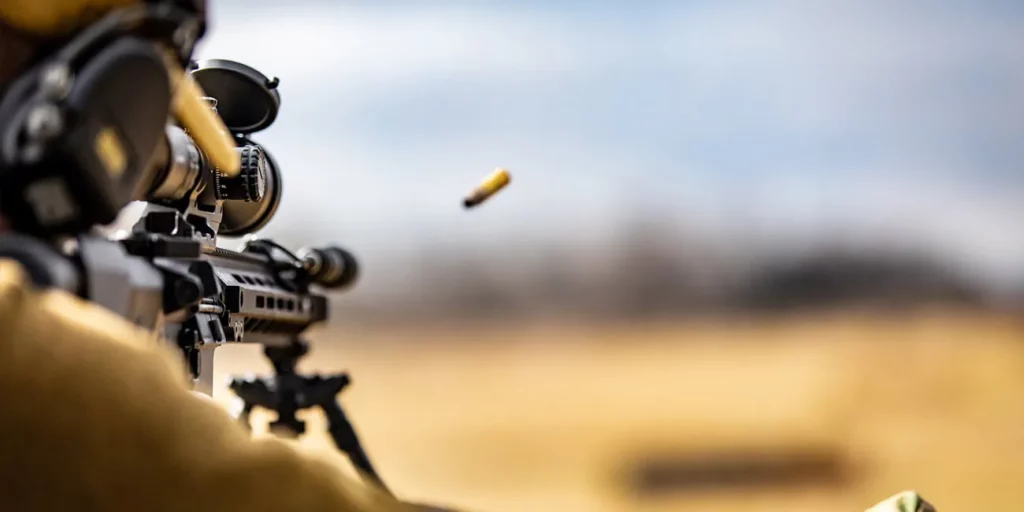The AR-15 rifle, a popular firearm among enthusiasts and professionals alike, owes its versatility and performance largely to its modular design. A key component of this modularity is the upper assembly, which plays a crucial role in determining the rifle’s overall performance and accuracy. This article delves into the various aspects of the upper assembly, exploring how different choices can impact the functionality and precision of an AR-15.

Understanding the Upper Assembly
The upper assembly of an AR-15 consists of several critical components, including the barrel, bolt carrier group (BCG), gas system, and the upper receiver itself. Each of these components can be customized, providing the shooter with a wide range of performance characteristics.
1. Barrel Considerations
- Length and Weight: Barrel length affects velocity, accuracy, and maneuverability. Longer barrels generally provide higher bullet velocity and better accuracy at long distances, while shorter barrels are more maneuverable and lighter, suited for close-quarters scenarios.
- Material and Construction: Materials like stainless steel or chrome-molybdenum (chrome-moly) steel are common. Stainless steel barrels typically offer better accuracy, while chrome-moly barrels are known for durability. The method of barrel rifling, such as cold hammer forging, also affects longevity and precision.
- Twist Rate: The twist rate of the barrel, defined as the distance the rifling takes to complete one full rotation, is crucial for stabilizing different bullet weights. A twist rate that matches the bullet weight ensures optimal accuracy.
- Caliber Variations: The choice of caliber also significantly affects performance. An option like the 6.5 Grendel upper offers a balance between long-range accuracy and minimal recoil, making it a popular choice among precision shooters and hunters.
2. Bolt Carrier Group (BCG)
- Material and Coating: The BCG’s material and coating affect its durability and resistance to corrosion. Coatings like Nickel Boron or Titanium Nitride can reduce friction and improve the BCG’s lifespan.
- Weight and Cycling: The weight of the BCG influences the rifle’s cycling rate. A heavier BCG can reduce felt recoil, while a lighter one can increase the cycling speed, affecting the rate of fire and potentially the shooter’s control over the weapon.
3. Gas System Length
- Direct Impingement vs. Piston Systems: The choice between a direct impingement system and a piston system can impact the rifle’s maintenance needs and recoil characteristics. Piston systems tend to run cleaner but might add weight and affect the rifle’s balance.
- Gas System Length: Options like carbine, mid-length, and rifle-length gas systems offer different levels of recoil and cycling rates. The choice can affect the rifle’s performance, particularly in rapid fire scenarios.
4. Upper Receiver and Rail Systems
- Material and Weight: The upper receiver’s material (typically aluminum alloys) and weight influence the rifle’s overall balance and durability. Lighter receivers are easier to handle but might compromise on longevity.
- Rail Systems: The type of rail system, such as M-LOK or KeyMod, determines the type and placement of accessories. This choice can significantly impact the rifle’s functionality and the shooter’s ability to adapt to different scenarios.
Impact on Performance and Accuracy
Each choice in the upper assembly has a direct impact on the AR-15’s performance and accuracy. The right combination can lead to a highly accurate, reliable, and ergonomic firearm, suitable for both competitive shooting and tactical applications.
1. Balancing Accuracy and Handling
The primary goal in selecting an upper assembly is to balance accuracy with handling. A longer, heavier barrel may offer superior accuracy at long range, but it can make the rifle cumbersome in tight spaces. Conversely, a lighter, shorter barrel might sacrifice long-range precision for better handling and speed.
2. Reliability and Maintenance
The BCG and gas system choices can affect the rifle’s reliability and maintenance needs. A well-constructed BCG and an appropriate gas system can ensure consistent performance even in adverse conditions. However, these choices might also necessitate regular maintenance to keep the rifle functioning smoothly.
3. Customization for Specific Needs
AR-15 enthusiasts often tailor their rifles for specific uses. For instance, a 3-gun competitor might prefer a different upper assembly configuration than a hunter or home defender. Understanding the impact of each component allows shooters to customize their rifles to their exact needs.
Conclusion:
The AR-15’s upper assembly is a complex and integral part of the rifle, with each component playing a significant role in its overall performance and accuracy. By making informed choices about the barrel, BCG, gas system, and upper receiver, shooters can significantly enhance their AR-15’s capabilities. Whether for competitive shooting, hunting, or tactical applications, understanding and selecting the right upper assembly components is key to achieving the desired performance and accuracy from an AR-15 rifle.